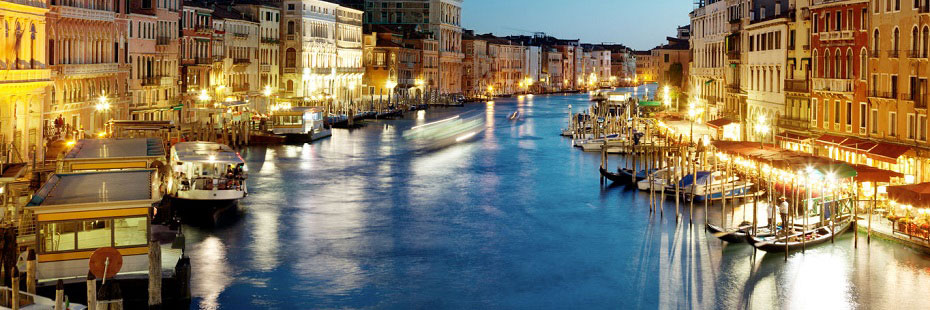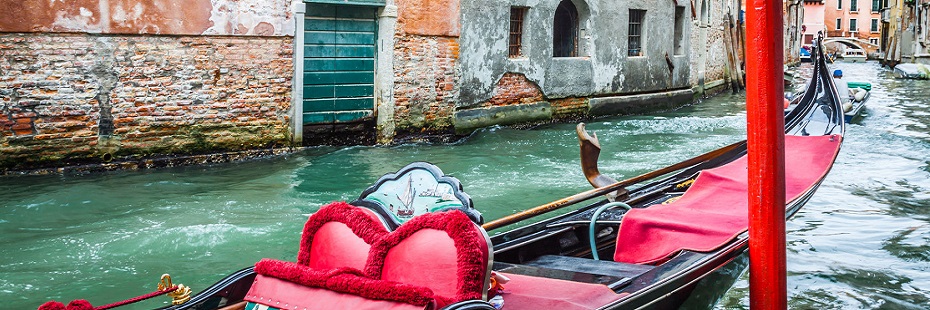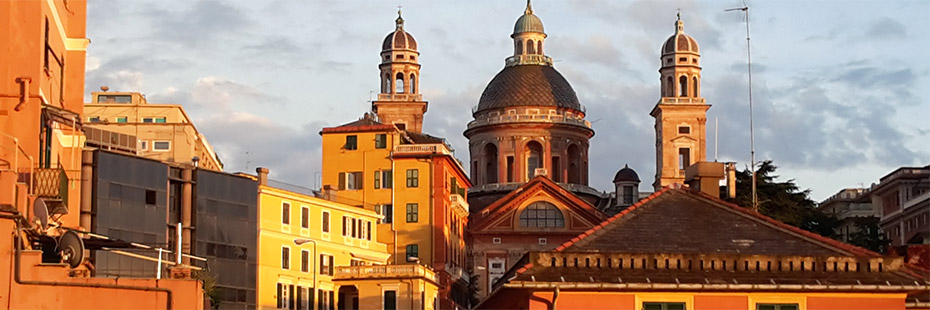| Adorano la Sicilia. Le ragazze bene nella ricca Parma del nord. Le belle ragazze della novella di Sciascia "Il giorno della civetta", sdraiate a pancia in giù sulla moquette pelosa, bevendo Carlos Primero e ascoltando jazz di New Orleans, fremono e rabbrividiscono eccitate al pensiero dei gelosi uomini siciliani, dei loro coltelli e "dell'onorevole società". | They adore Sicily. The chic girls of rich Parma in the north. The pretty girls in Sciascia's novel Il giorno della civetta (The Day of the Owl), sprawled on their tummies on the soft moquette, drinking Carlos Primero ant listening to New Orleans jazz, shudder and quiver deliciously about jealous Sicilian men and flashing knives and the "honorable society". |
 |
|
| "Adoro la Sicilia. Una volta sono stato a Taormina. Ma dicono che bisogna andare nell'interno..." il carabiniere eroe di Sciascia, di ritorno da una lunga e brutale battaglia con il crimine siciliano, non riesce a spiegarsi la vera natura della Sicilia. "È incredibile", dice semplice ma puntuale, mentre le ragazze bevono brandy e chiaccherano di amore e sesso. Lo scrittore siciliano dice che anche l'Italia è incredibile, e che bisogna andare in Sicilia per capirlo. Forse l'Italia intera sta diventando come la Sicilia. La Sicilia, dice, è donna, una donna misteriosa, implacabile, vendicativa e bellissima. | "I adore Sicily. I was once in Taormina. But they say you have to go into the interior…" Sciascia's Carabiniere hero, just back from a long brutal battle with crime in Sicily, can't explain what Sicily is really like. "It's incredible", he says simply but to the point, while the girls drink brandy and speak of love and sex. The Sicilian writer says Italy too is incredible, and that you have to go to Sicily to realize just how incredible Italy is. Maybe all of Italy is becoming Sicily. Sicily, he says, is a woman, a mysterious, implacable, vindictive, beautiful woman. |
| Un crocevia, un crogiuolo di culture, una superimposta all'altra. Come la sua architettura - una chiesa normanna costruita sopra un tempio greco e una moschea araba. Strato dopo strato. Civilizzazione dopo civilizzazione. Negletta dall'Italia, la Sicilia è un continente isolato. Aride montagne rocciose e verdi praterie, pendii innevati dell'Etna con i suoi 3.226 metri, e vaste spiaggie sabbiose. La gente non si lascia definire; i contrasti sono quelli della natura: normanni alti dagli occhi azzurri e siculi bassi e scuri. 90% dei 5 milioni di siciliani vive nelle città di un'isola sovrappopolata. Hanno scoperto il petrolio ma non c'è abbastanza acqua. Un mondo di arte e cultura insieme a banditismo e ignoranza. Un grande triangolo che si affaccia su Europa, Africa e Grecia, il cui simbolo è l'arancia. Nonostante la cultura occidentale, assomiglia al Nord Africa. | A cross-roads, a melting pot of cultures, one superimposed on the other. Like its architecture - a Norman church on top of a Greek temple and an Arab mosque. Layer after layer. Civilization after civilization. Neglected by Italy, Sicily is an isolated continent. Dry rocky mountains and green prairies, snow slopes of 3,226 meter Mt. Etna and wide sandy beaches. The people defy definition; their contrasts are the contrasts of nature: tall blue-eyed Normans and small dark Siculans. 90% of the five million Sicilians live in cities on an over-populated island. They discovered petroleum but have too little water. A world of art and culture and banditism and ignorance. A great three-faced triangle facing Europe, Africa and Greece, whose symbol is the orange. Despite its Western culture, it resembles North Africa. |
 |
|
| Se i romani dicono che "l'Africa comincia a sud di Napoli" e i milanesi rispondono "comincia a Roma", la maggioranza degli italiani concorda nel dividere la Sicilia lungo un asse nord-sud, attraverso il centro dell'isola. Palermo e Agrigento a ovest, Catania e Siracusa a est. La Sicilia orientale fu colonizzata da fenici e greci, mentre quella occidentale fu dominata dagli arabi. L'occidente soffre maggiormente il malgoverno e la mafia. A est la gente è più aperta, più vicina al nord. Di conseguenza lo stato ha investito di più nella Sicilia orientale, accentuando così le differenze. La "greca" Siracusa a est ha il reddito pro-capite maggiore in Sicilia; Agrigento a ovest è la provincia italiana più povera. | If Romans say "Africa begins just south of Naples" and Milanese say "it begins at Rome", most Italians divide Sicily from north to south through the center of the island. Palermo and Agrigento in the West, Catania and Siracusa in the East. East Sicily was colonized by Phoenecians and Greeks, while the West felt more the Arab domination. The West is afflicted more by bad government and mafia. People in the East are more open, closer to the north. Therefore Italy invested more in East Sicily, thus accentuating the difference between the two parts. "Greek" Siracusa in the East has the highest pro capita income in Sicily; Agrigento in the West is Italy’s poorest province. |
| Questo è un resoconto di 1000 km attraverso alcuni dei posti meno usuali della maggiore isola mediterranea, un monumento occasionale, una particolare strada, un percorso in treno o autobus, un buon pasto, un buon vino. Si può vedere qualcosa della Sicilia in 2 giorni, abbastanza in una settimana, molto in una vacanza di un mese. Ottobre è un buon periodo. Meglio andare in macchina; io l'ho fatto in treno, autobus, un passaggio da un amico o un pulman turistico e via nave o aereo. Fra un posto e l'altro, attraverso 1000 km, potete immaginarvi il mezzo di trasporto che preferite. | This is an account of 1000 kms to some unusual corners of the Mediterranean's biggest island, an occasional monument, a route taken, a train or bus ride, a good meal, a good wine. You can see something of Sicily in two days, much in two weeks, a lot in a 4-week vacation. October is a good time. It's best in a car; I did it by train, bus, a lift from a casual friend or a tourism pullman, and by boat and plane. Between each place, through the 1000 kms you can imagine the transportation you prefer. |
 |
|
SIRACUSA - La più bella città greca Una eclissi di luna - sempre un malaugurio per i greci - condannò la flotta greca che assediava Siracusa nel 415 A.C. Il comandante greco aveva deciso la ritirata, a causa della resistenza siracusana, quando l'eclissi gli suggerì un ripensamento poi rivelatosi fatale. Al termine dell'eclissi i siracusani bloccarono l'uscita del porto e inflissero una terribile sconfitta agli ateniesi intrappolati. 134 triremi greche furono affondate e 33.000 greci catturati e fatti morire di calore e di sete nella "latomia del paradiso", un'enorme cava di roccia da cui si costruì gran parte di Siracusa. Oggi, 2500 anni dopo, un batiscafo telecomandato sta cercando i resti di quella flotta greca sul fondo del Porto Grande. Gli storici vogliono scoprire i segreti custoditi dal fondo di quel porto, grande centro del mondo antico. Le battaglie navali combattutevi lasciarono molte navi con i loro carichi a giacere sul fondale. |
SIRACUSA - The most beautiful greek city Greeks - condemned the fleet from Athens besieging Siracusa in 415 B.C. The Greek commander had decided to retreat because of Siracusan resistance when the eclipse advised him that fatal delay. At the end of the eclipse the Siracusans blocked the harbor exit and inflicted a terrible defeat on the trapped Athenians. 134 Greek triremes went down and 33,000 Greeks were captured to die of heat and thirst in the "latomia of Paradise", the huge rock quarry from which most of Siracusa was cut. Today, 2500 years later, a tele-guided bathyscaphe is seeking the remains of that Greek fleet at the bottom of "Il Porto Grande". Historians are curious about the secrets at the bottom of that harbor that was a great center of the ancient world. Naval battles fought there left many ships and their cargo at the bottom. |
| Fondata nel 734 A.C. Siracusa fu una delle prime città greche dell'occidente, la più importante della Sicilia, con una popolazione di 350.000 abitanti; la più grande e bella delle città greche. Per i greci che si spostavano a occidente la Magna Grecia, nome dato alle colonie greche, appariva come l'America ai coloni europei 2500 anni dopo. Un nuovo mondo, con ampi spazi e suolo fertile, una terra di opportunità e speranze. | Founded in 734 B.C. Siracusa was one of the first Greek cities in the West, the most important in Sicily, with a population of 350,000, the biggest and most beautiful of Greek cities. To Greeks coming to the West "Magna Graecia" as the Greek colonies were called, appeared like the Americas to European colonizers 2500 years later. A new world, with wide spaces and good soil, the land of golden opportunity. |
| "Magna" si riferisce alla grandezza di quelle terre di conquista. La Magna Grecia andava da Cuma vicino a Napoli fino a Taranto sulla suola dello stivale, da Siracusa lungo la costa meridionale fino ad Agrigento. I mari Ionio e Tirreno. Come i coloni americani così i greci si arricchirono in Magna Grecia. Costruirono città, templi e teatri. La Magna Grecia conservò il meglio della civilizzazione greca per molto tempo dopo il declino della Grecia. | "Magna" refers to the greatness of those conquered lands. Magna Graecia reached from Cuma near Naples to Taranto on the instep of the boot, from Siracusa along the southern coast to Agrigento. The Ionian and Tirrenian seas. Like American colonists the Greeks became rich in Magna Graecia. They built cities, temples and theaters. Magna Graecia preserved the best of Greek civilization long after the decline set in Greece. |
| Ora la Sicilia appartiene all'Europa intera. Non si potrebbe scegliere un posto migliore per iniziarne il viaggio che Siracusa, l'antica capitale. Punto di partenza la scogliera rocciosa di Siracusa, guardare verso la Grecia e immaginare l'arrivo dei primi coloni greci 2500 anni fa. | Now Sicily belongs to all of Europe. What better place to set out in that southern world than Siracusa, its ancient capital. One start is standing on the rocky cliffs of Siracusa, looking toward Greece, imagining the arrival of the first Greek colonists 2500 years ago. |
Il mistero del PAPIRO La misteriosa pianta di papiro cresce lungo le rive del torrente Ciana vicino a Siracusa. Ci si può ancora andare in barca, scivolando fra le piante di papiro vicino alla Fontana di Ciana, ma si dice che anche il papiro siciliano è destinato a scomparire come quello egiziano. |
The mistery of PAPYRUS The mysterious papyrus plant grows along the banks of the small river Ciana near Siracusa. You can still go there by boat, slipping among the hedges of papyrus near the Fountain of Ciana, but they say that also the Sicilian papyrus is destined to disappear as it did in Egypt. |
| Il papiro era utilizzato come base per la scrittura dai popoli dell'antichità. La carta veniva ottenuta da strisce di polpa della pianta di papiro, inumidita e asciugata sotto pressione. Abbondantissimo in prossimità del Nilo, cominciò a diminuire nel secolo XI, e sparì del tutto entro il secolo XIX. Le fabbriche egiziane furono abbandonate, e il segreto della lavorazione si perse. Per secoli si ricercò quel segreto. | Papyrus was used as writing material by ancient peoples. That paper was made from strips of the pith of the papyrus plant, soaked and dried under pressure. Long abundant along the Nile, it began to diminish in the XI century, and had disappeared by the XIX century. The Egyptian factories perished, the secrets of its production lost. For centuries one searched for that secret. |
| Venti anni anni fa a Siracusa, Corrado Basile dell'Istituto del Papiro cominciò a sperimentare con il papiro che cresce lungo il Ciana. Oggi produce carta di papiro con la stessa resistenza del vecchio papiro egiziano. L'Istituto del Papiro, a Siracusa in Viale Teocrito 66, tel. 22100, riproduce con fedeltà assoluta immagini greche e antichi testi egiziani. Una visita all'istituto è come un viaggio all'indietro nel tempo di migliaia di anni. | 20 years ago in Siracusa, Corrado Basile of the Istituto di Papiro began experimenting with the papyrus that grows along the Ciana. He now produces papyrus paper with the same resistance of old Egyptian papyrus. The Papyrus Institute, Siracusa, Viale Teocrito 66, tel. 22100, reproduces with perfect fidelity Greek images and ancient Egyptian texts. A visit to the institute is to go back in time thousands of years. |
I nuovi ricchi di CANICATTÌ Canicattì divenne famosa per i suoi vigneti; i vini bianchi locali sono deliziosi. Canicattì giace su un altopiano a mezza strada fra Agrigento e Caltanissetta, 40 km da entrambi, un'ora di treno, meno in corriera, molto meno in auto. I contadini della zona hanno scoperto negli anni '70 che la loro terra argillosa è particolarmente adatta alla vite. Eliminarono mandorle e ulivi e piantarono filari di viti. Agricoltori che a mala pena sopravvivevano si trovarono a guadagnare 300.000.000 di lire all'anno. La vite qui portò enormi profitti, sette volte l'investimento. I nuovi magnati del vino di Canicattì furono catapultati all'apice delle classifiche di ricchezza. La loro nuova vita dipende dal tempo: le loro preoccupazioni sono l'uva e il cielo. Piogge inaspettate in giugno sono un disastro per alcuni, come anche per i vicini coltivatori di grano. |
The new rich of CANICATTÌ Canicattì became famous for its grapes, and its white wines are delicious. Canicattì lies in high country midway between Agrigento and Caltanissetta, 40 kms from each, an hour by train, less by bus, much less by car. Peasants here discovered in the 1970s that their clay earth is particularly adapted to grapes. They eliminated almond and olive trees and planted rows of grape vines. Farmers who were barely surviving before suddenly were earning $200,000 a year. Grapes here bring enormous profits, seven times the investment. The new Canicattì vine magnates were catapulted to the top income category. Their new life depends on the weather: their every concern is the vines and the sky. Unexpected rain this June was a disaster for some, like for nearby grain cultivators. |
| La lunga stagione della vendemmia dura da settembre a dicembre. In quel periodo gli stranieri arrivano a Canicattì, lavoratori stagionali, somali, tunisini, hippy, tutti felici di lavorare per 50.000 lire al giorno abitando in stanze a poco prezzo nella città alta. Compratori da Palermo e Catania fanno a gara per le uve migliori e abitano alberghi ad Agrigento o Caltanissetta, dato che la ricca Canicattì con i suoi 32.000 abitanti non ha hotel, come succede in molte altre cittadine siciliane. | The long grape vintage lasts from September to December. Then the foreigners arrive in Canicattì, seasonal workers, Somalians, Tunisians, hippies, all happy to work for $30 a day and live it cheap rooms in the upper town. Buyers from Palermo and Catania competing to buy the best grapes live in hotels in Agrigento or Caltanissetta, for rich Canicattì with its 32,000 population has no hotel, no different from many small Sicilian towns. |
| La vita a Canicattì non subisce traumi a causa dell'invasione di forestieri. Quando la vendemmia è finita e l'uva venduta, tutto ritorna all'antico ritmo. Matrimoni e fidanzamenti nelle feste religiose e pagane di primavera. Il venerdì santo a Pasqua con la processione, metà religiosa e metà pagana, l'intera città in abito da festa lungo il corso Regina Margherita. E le feste pagane nel paese alto di Borganino dove piccole osterie vendono vino e uova sode, cipolle e formaggio caprino fresco e fagioli al forno. | The habits of Canicattì are unaffected by the seasonal invasion of foreigners. When the harvest is finished and the grapes sold, everything returns to its normal ancient rhythm. Marriages and engagements in the spring religious and pagan festivals. Holy Friday at Easter with its processions, half religious, half pagan, the whole town out in its best dress along Corso Regina Margherita. And the pagan festival in the upper town of Borganino when little taverns sell wine and hard-boiled eggs, onions and fresh goat cheese and oven-baked broad beans. |
| I nuovi ricchi, si dice, viaggiano verso luoghi esotici, Courmayeur, le Seychelles o i Caraibi, oppure visitano ricchi parenti negli USA. Ma il vero status symbol a Canicattì è il bagno, un bagno nuovo in ogni casa. I nuovi ricchi stanno a casa a Canicattì; e sfoggiano la ricchezza con il loro bagno. | The new rich, they say, travel to exotic places, to Courmayeur, the Seychelles or the Caribbean, or to visit rich relatives in the USA. But the real status symbol in Canicattì is the bathroom, a new bathroom in a new house. The new rich stay at home in Canicattì; their only display of wealth is their bathrooms. |
 |
|
La più bella VALLE del mondo La Valle dei Templi è situata fra la nuova città di Agrigento, in cima alla collina, e un costone affollato di templi greci che guarda verso il mare, villaggi di pescatori, le spiagge sabbiose e le isole di Lampedusa e Linosa. L'Hotel Villa Atena giace nella valle fra mandorli e ulivi, cipressi, rose, bouganville, azalee, geranei e rododendri. Dalle sue terrazze e balconi si può ammirare il maestoso tempio della Concordia, una delle meraviglie della Sicilia, senza scorgere alle proprie spalle il fiume di cemento che scorre giù dalla città di Agrigento. Completato nel 430 A.C., il tempio della Concordia è l'ultimo dei grandi templi costruiti dai greci della antica "Akragas". In granito, stile dorico, è l'esempio più alto dell'arte della Magna Grecia. |
The most beautiful VALLEY in the world The Valley of Temples lies between the new town of Agrigento high on the hill and a ridge lined with Greek temples overlooking the sea, fishing villages, sand beaches and the islands of Lampedusa and Linosa. Hotel Villa Atena lies in the valley amidst almond and olive trees, cypresses, roses, bouganville, azaleas, geraniums and rhododendron. From its terraces and balconies you stare directly up at the majestic "Concordia" temple one of the wonders of Sicily, without seeing behind you the snake of cement creeping down from Agrigento town. Completed in 430 B.C., "Concordia" is the last of the great temples built by the Greeks of old "Akragas". In sandstone, in Doric style, it is the high point of the art of Magna Graecia. |
| Akragas fu fondata nel 581 A.C. da coloni di Rodi e Creta, per poi divenire una delle principali città del mondo mediterraneo, dicono gli storici, con 800.000 abitanti. Dopo i greci, fu la volta di cartaginesi, romani, bizantini, arabi, normanni, hohenstaufen, spagnoli, borboni, italiani. La Akragas greca fu distrutta dagli arabi che costruirono un'altra città sulla collina soprastante chiamandola "Kerkent". Dall'arabo derivò il nome "Girgenti", poi latinizzato da Mussolini in Agrigento. | Akragas was founded in 581 B.C. by colonists from Rhodes and Crete, to become one of the major cities of the Mediterranean world, one historian said with 800,000 people. After the Greeks, came waves of Carthagenians, Romans, Byzantines, Arabs, Normans, Hohenstaufen, Spanish, Bourbons, Italians. Greek Akragas was destroyed by the Arabs who built another city on the hill above and named it "Kerkent". The name "Girgenti" emerged from the Arabic, until Mussolini latinized it to Agrigento. |
| L'orribile città nuova sulla collina è infettata dalle malattie del sud italiano: speculazione edilizia, abusivismo, corruzione politica, disoccupazione, emigrazione forzata, mancanza d'acqua. Agrigento è infastidita dalla valle! La vorrebbe seppellire nel cemento. Gli speculatori all'assalto dei templi. La terra degli dei, tormentata dagli speculatori della terra. | The ugly new city on the hill is infected by the ills of the Italian south: land speculation, abusive construction, political patronage, unemployment, mass forced emigration, and no water. Agrigento is irritated by the valley! It wants to submerge it under cement. Speculators are assaulting the temples. The land of the gods, tormented by land speculators. |
| I giovani emigrano per cercare lavoro, oppure vivono a carico dei genitori o diventano criminali. Qualsiasi cosa pur di lavorare! Votate DC (Democrazia Cristiana, partito ora sciolto*) o fascista per un'impiego. "Non c'è voto segreto qui", confida il cameriere del ristorante. "Devo votare DC per mantenere il mio lavoro. La DC controlla tutto." Ma giù nella Valle dei Templi ci si sveglia al canto degli uccelli. E i templi lungo la cresta della collina si stagliano sopra il mare blu, illuminati di notte, poi al mattino maestosi, solitari, sereni, silenziosi e impervi al trascorrere del secoli. | Young people emigrate to find work, or live off their parents or turn to crime. Anything for work! Vote Christian Democrat (a party now dismantled) or fascist for employment. "There's no secret vote here", the restaurant waiter confides. "I have to vote DC to keep my job. The DC controls everything." But down in the Valley of Temples birds wake you in the morning. And the temples along the crest of the hill over the blue sea stand there, illuminated at night, then in the morning more majestic, alone, serene, silent and impervious to the passing centuries. |
MULINI a VENTO Mulini a vento sull'antica isola fenicia dello Stagnone (grande stagno) in un mare poco profondo di acqua quasi stagnante. Tutto è possibile in questo posto unico. Di fronte a Marsala, la linea costiera e l'isola piatta dello Stagnone formano una baia protetta che circonda quattro piccole isole. La più famosa è Mozia dove i fenici nell'ottavo secolo A.C. fondarono una città commerciale che più tardi si trovò a competere con i greci di Agrigento e Siracusa. Le calde acque salate profonde 1-3 metri di questa baia contengono il miglior pesce del mondo. Circa 40 specie - spigole, orate, sogliole, anguille, naselli, pesci scorpione abbondano in questo mondo misterioso. Uno strano mare piatto e isole silenziose da visitare con una lenta barca lagunare di pescatori locali. E a Marsala si vive bene, gustando vini superbi e apprezzando la dieta mediterranea fatta di pasta, grano, pesce, verdure e frutta. |
WINDMILLS Windmills on the old Phoenician island of Lo Stagnone (the great pond) in a shallow sea of nearly stagnant water. Anything is possible in this unique place. Off the coast near Marsala the coast line and the flat island of Lo Stagnone form a protected bay inside which are four small islands. The most famous is Mozia where the Phoenicians in the 8th century B.C. founded a commercial town that later competed with the Greeks of Agrigento and Siracusa. The warm salty waters of this 1-3 meter deep bay contain the world's best fish. Some 40 species - seabass (spigola) and dory (orata), sole, eel, mullets, scorpion abound in this mysterious world. A strange flat sea and silent islands to be visited in a slow flat boat of local fishermen. And in the town of Marsala you can live in peace, drinking superb wines and eating the Mediterranean diet of pasta, grains, fish, vegetables, fruit. |
| (continua) | (to be continued) |
TESTIMONIAL (more...):







